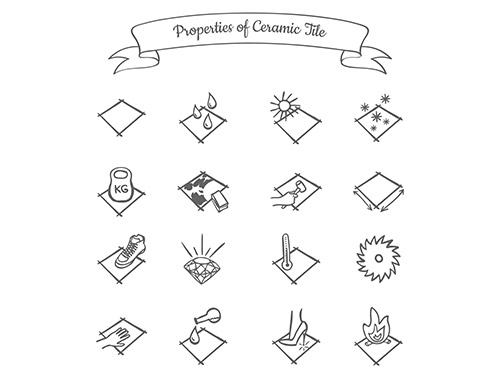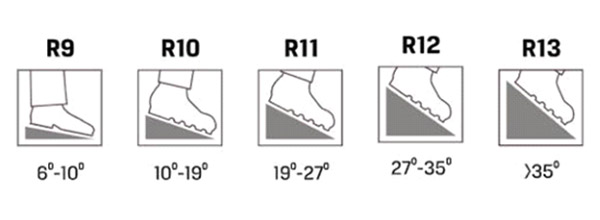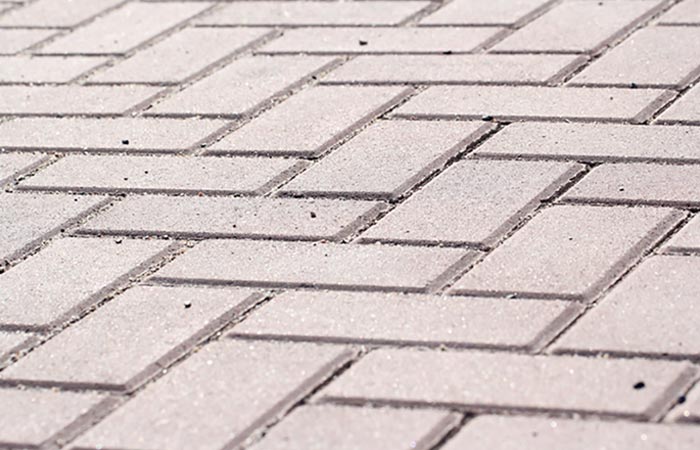Tiling your parking area is akin to completing the looks and experience of your building. Without the texture offered by the tiles, the area looks like an incomplete construction. Also, in public places using tiles could be necessary due to the need for guiding the vehicles and marking safety lines.
Here are the things you need to consider while selecting tiles for the parking area:
- Material strength – load-bearing, surface hardness, heat and weather temperament
- Slip resistance or surface grip
- Different materials for outdoor and indoor usage
- Choice of patterns and appearance
Material Strength

Depending on whether you are looking at a house parking area or industrial parking for heavy vehicles, strength will be the first parameter to check. Different flooring materials offer varying degrees of tensile or mechanical strengths. This is usually denoted in the load-bearing capacity of the tile.
Natural materials like granite, limestone, and quartzite are quite strong and make for an easy choice for parking. However, sourcing and quality of the material are often difficult to achieve at all locations. So, you may consider the full body vitrified tiles like Johnson’s Marbonite, or Endura series for the role.
These tiles are made at high temperatures by mixing feldspar, quartz and silica with clay and required colour pigments. Parking area tiles are specially created for grip, strength and surface hardness for long-lasting performance. Full body vitrified tiles with a surface hardness greater than 7 (MOH scale) and thickness of 10 MM are good for parking area use.
Grip – Slip Resistance

The grip is another parameter you should consider. Although glossy tiles look better, you wouldn’t want vehicles slipping on them. Also, the Indian environment is prone to dust and water clogging, which can cause issues with surface resistance.
Natural stones like granite and quartzite, while durable, often lack a substantial all-weather slip resistance. This is one area where manufactured tiles give you more confidence. With full-body vitrified tiles like Johnson Endura, you can choose the slip resistance you need with the flooring.
For example, you need a maximum grip on the ramps but a little less on the parking floor. So, you can choose tiles ranging from R9 to R13, R9 being the lowest slip-resistant. These numbers measure the angle up to which the tile’s surface will offer slip resistance even with an oil spill.
Thus, you can choose tiles which will offer adequate grip to the vehicles and other traffic along with durability.
Materials for Outdoor & Indoor Spaces

You can choose the material for your parking depending on the need for appearance and your budget. While open or outdoor parking needs materials which are cheaper and sturdier, indoor offers more space for creativity.
However, if the parking is a high-traffic commercial space, using easily replaceable materials makes more sense. Here are the materials you can consider for parking space floors:
| Outdoors | Indoors |
|
|
Patterns

When it comes to design patterns you can have in your parking space, different materials affect your choices. Granite, for example, will offer a standard pattern throughout, unless you decide to mix two different granites for a specific design.
This is another area where manufactured tiles like porcelain and full body vitrified tiles offer a wider range of choices. You will need to use one of these tiles, especially in public parking areas, where markings and safety lines are a need.
Cobbled and tumbled stones offer a more classical pattern for outdoor parking. Stones are perfect when your parking is mixed with more natural surroundings. They are also easily replaceable and maintain consistency with the surroundings.
However, you can also use vitrified pavers for outdoor use. These will continue the natural look while offering a more inexpensive alternative to natural stones.
Size & Fitting
Pre-cut tiles make for a better choice here, as they need minimal on-site resizing. You can select the best possible size to minimise the fitting time and costs. Also maintaining tiles and keeping them clean is easier than cemented outdoor spaces. Tiles don’t accumulate dust and stains as easily as other materials do.
For ceramic tiles, you can choose from 20x20, 30x30 and 40x40 cm sizes. Ceramic or porcelain tiles offer you various options as per the usage and need of your space. For instance, if you are paving the floor for a vehicle repair workshop you can go for 120 mm to 200 mm thickness.
The Easiest Choice
Vitrified tiles offer the best portfolio of sturdiness, design and price out of all the materials. The surface hardness or 7 (MOH scale) ensures that the tile is not damaged easily. Further, the uniformity of colour throughout the tile ensures that the appearance doesn’t change if the surface suffers damage.
Full body vitrified tiles are as hard as quartzite or granite stones but offer consistency in quality and pocket-friendliness in installation.